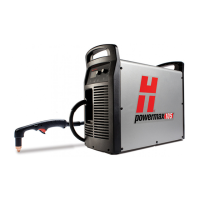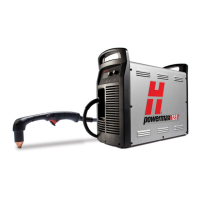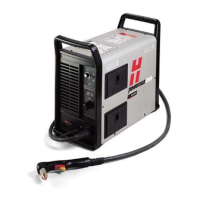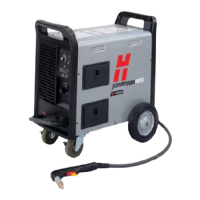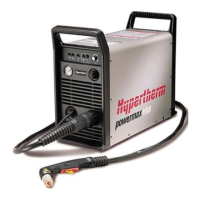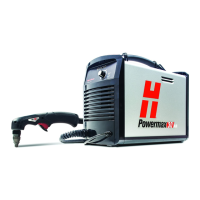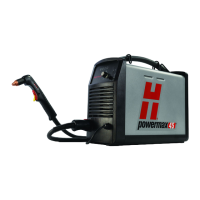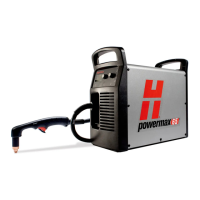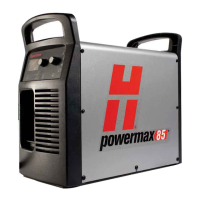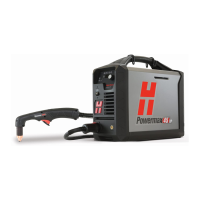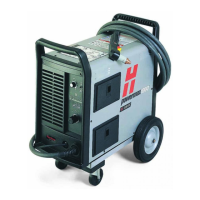MAINTENANCE
1
powermax1000 Service Manual 3-17
Problem This may mean Cause Solution
Current adjustment set too low.
Verify that the current adjustment knob is at the proper setting (turn to
max, fully clockwise).
Defective power board current sensor.
Verify that the yellow wire connected to the bottom of Q6 is wired
through the bottom of L1. If so and the "IF" LED is illuminating (see
Control Board LEDs
), replace the power board and perform Test 5. If
one of the two tests fails, replace the power board (PCB2) and the
appropriate IGBT.
Verify the Transfer LED illuminates properly (see
Control Board LEDs
)
on the control board (PCB3) and check the current on the work lead.
If the current is between 15 and 25 amps and the LED illuminates,
replace the control board.
Mode switch set wrong. Set the mode switch to the correct position.
Faulty control board (PCB3).
Verify that the Transfer LED illuminates on the control board and
verify that the "IF" LED is not illuminating (see
Control Board LEDs
).
If both are true, replace the control board (PCB3).
Start signal illuminated on
control board.
CNC issuing plasma start in a machine
application or the torch trigger is
defective or engaged.
Remove the interface cable from the back of the power supply and
check the Start LED (see
Control Board LEDs
). If the Start LED goes
out, the problem is either a short circuit in the interface cable or the
CNC is issuing a plasma start signal. For a hand torch, check wiring
of the torch trigger (see
T80 Hand Torch
).
Red LED on power board (PCB2)
remains illuminated when input
voltage is between 200-540 VAC.
Faulty PFC circuit on the power
board or the inverter is going
into an over-current state.
Faulty inverter IGBT (Q6), PFC IGBT
(Q7), power board (PCB2).
Major component damage on power
board (PCB2).
Shorted inverter IGBT (Q6) or
PFC IGBT (Q7).
Machine will not cut material well
(does not appear to be operating at
full cutting power) and the arc does
not time out after 5 seconds.
Losing pilot arc when going off plate
while in continuous pilot mode.
Continuous pilot arc does not
work.
Low output from power supply.
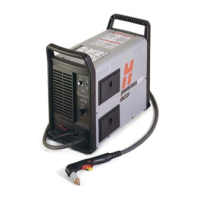
